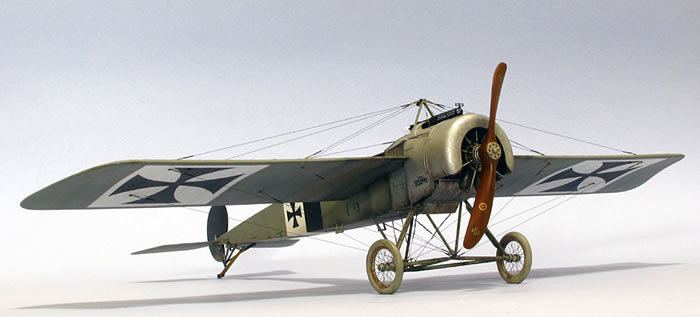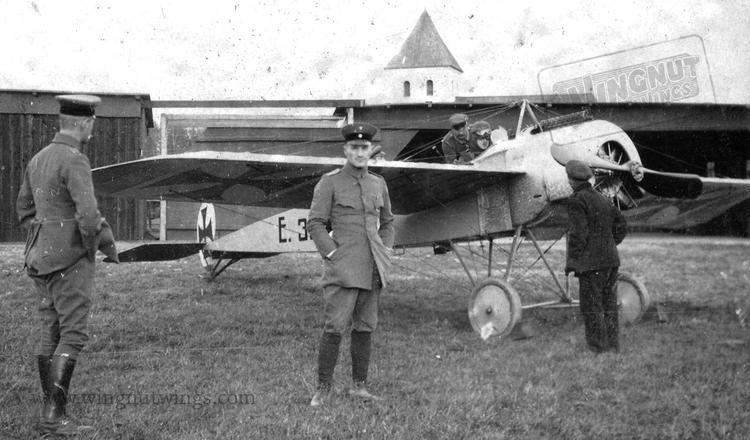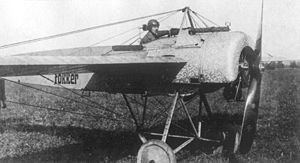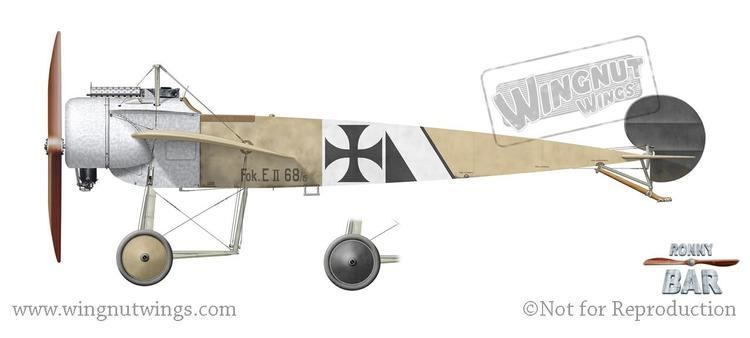Top speed 140 km/h Wingspan 9.7 m Manufacturer Fokker | Length 7.2 m Weight 340 kg First flight June 13, 1915 | |
 | ||
Airfix 1 72 fokker e ii eindecker part 1 new tooled
The Fokker E.II was the second variant of the German Fokker Eindecker single-seat monoplane fighter aircraft of World War I. The E.II was essentially a Fokker E.I with the 75 kW (100 hp) Oberursel U.I 9-cylinder rotary engine, a close copy of the French Gnôme Monosoupape rotary of the same power output, in place of the E.I's 60 kW (80 hp) Oberursel U.0, but whereas the E.I was simply a M.5K with a 7.92 mm (.312 in) machine gun bolted to it, the E.II was designed with the weapon system integrated with its airframe.
Contents
- Airfix 1 72 fokker e ii eindecker part 1 new tooled
- Airfix 1 72 fokker e ii eindecker part 3
- Design and development
- Operators
- Specifications EII
- References

Airfix 1 72 fokker e ii eindecker part 3
Design and development

On 13 June 1915, Anthony Fokker demonstrated the first E.II to an audience of German commanders, including Crown Prince Wilhelm of Germany, at a German Fifth Army airfield. On 23 and 24 June he demonstrated the aircraft at Douai to the German Sixth Army. It was during these demonstrations, only one week before any kills would be achieved in the Eindecker type, that Fokker himself attempted to engage an enemy aircraft but he was unable to find a target.

The major difference between the types was a reduced wingspan on the E.II, intended to increase speed, but handling and climbing performance suffered. The type was therefore quickly superseded by the E.III. The E.II also had a larger fuel capacity of 90 litres (23.75 US gallons) to supply the Oberursel U.I's 54 litres/hour fuel consumption, as compared to the E.I's 69 litres (18.2 US gallons) capacity to feed its earlier U.0 rotary, which used 37 litres/hour of fuel. As with the M.5K/MG quintet of production prototype Eindeckers, the pilot was provided with a head support to help him resist the airstream when he had to raise his head to use the gun sights.
The heavier weight of the 75 kW (100 hp) Oberursel U.I rotary engine used to power the E.II necessitated both a somewhat lengthened rear fuselage structure, in comparison to the E.I version to achieve proper balance, with the U.I engine's larger diameter requiring a larger radius "horseshoe" pattern cowl to enclose it, and the aluminum upper deck of the nose was raised along with it - resulting in metal soffits having to be fitted where the upper deck met the upper longerons, with additional structural metal tubing additions to the forward ends of the upper longerons immediately behind the firewall to support the "soffits" and sides of the raised upper nose panel. This format was continued with the E.III.

The E.II was built in parallel with the E.I and the choice of whether an airframe became an E.I or E.II depended on the availability of engines. In total, Fokker production figures state that 49 E.IIs were built and 45 of these had been delivered to the Western Front Fliegertruppe by December 1915 (Luftstreitkräfte from October 1916 onwards) at which time production switched to the main Eindecker variant, the Fokker E.III, which used the same 75 kW (100 hp) Oberursel U.I engine. Some E.IIs under production were completed as E.IIIs and numerous E.IIs returned to Fokker's factory for repair were upgraded to E.III specification.
Operators
Specifications (E.II)
General characteristics

Performance
Armament
